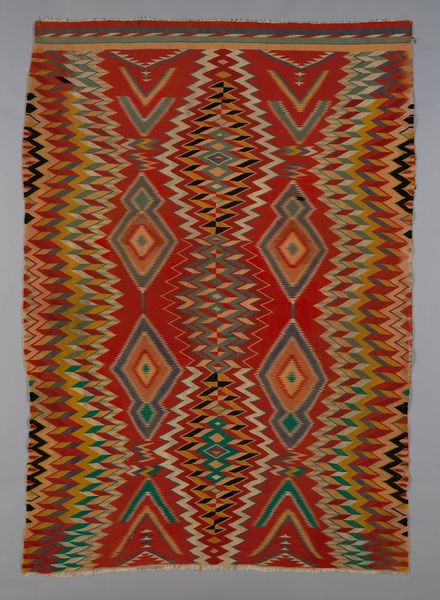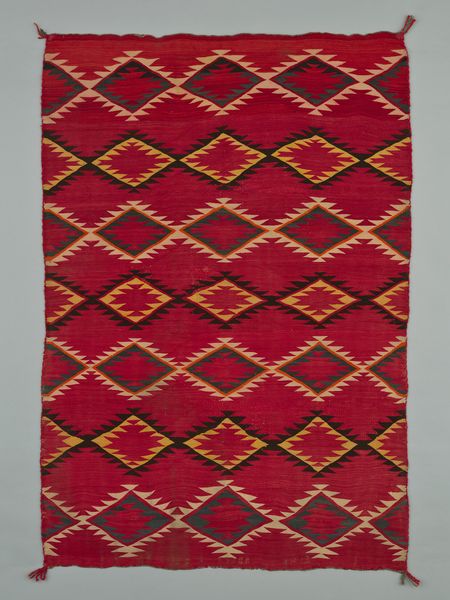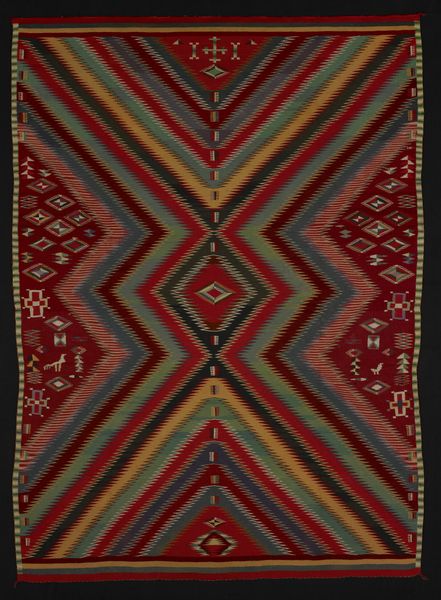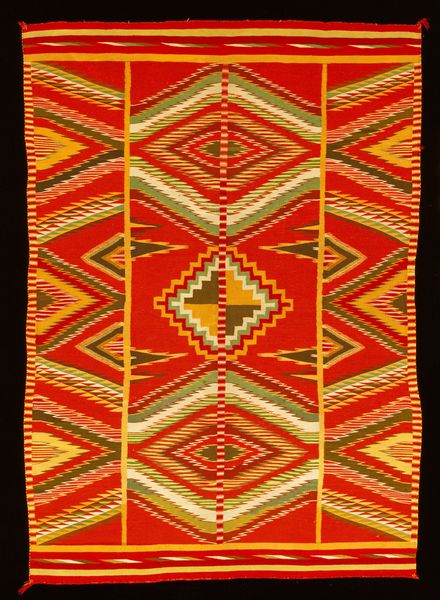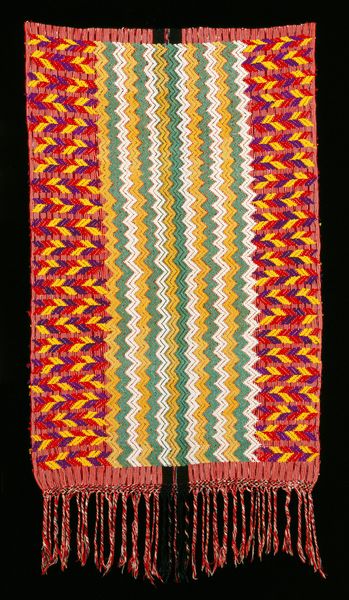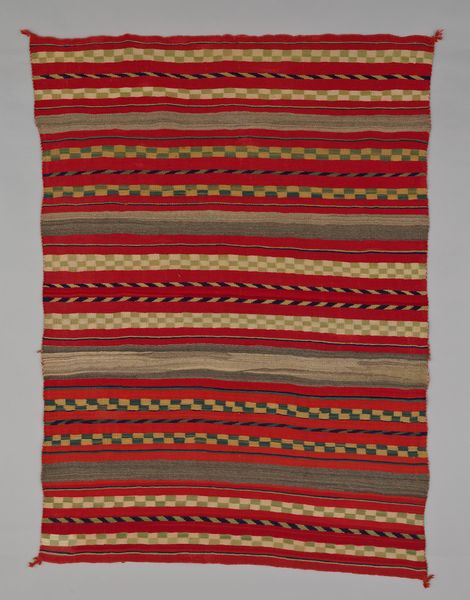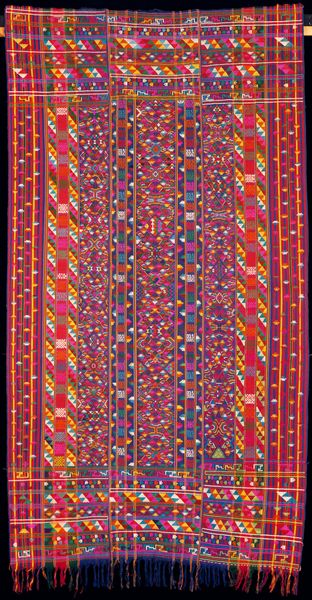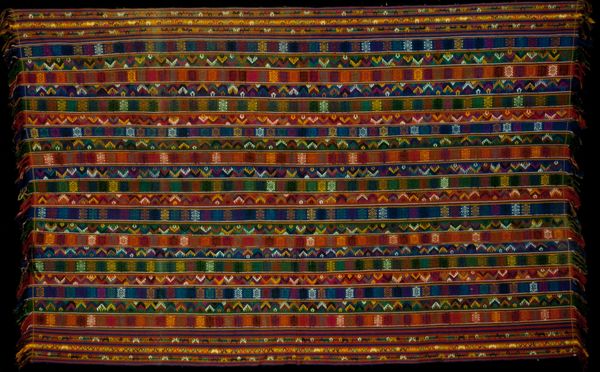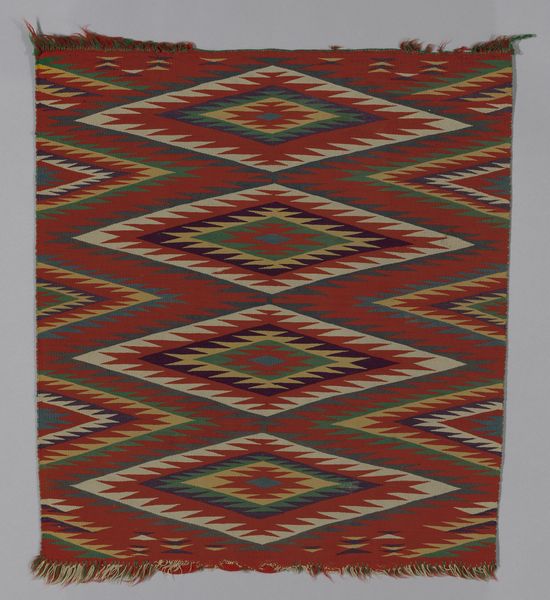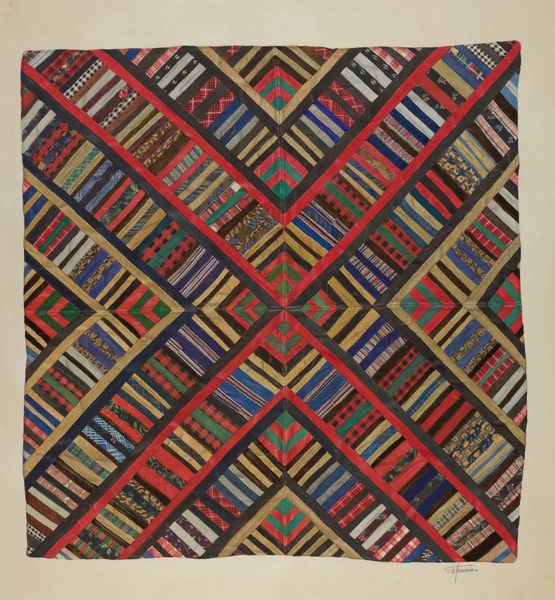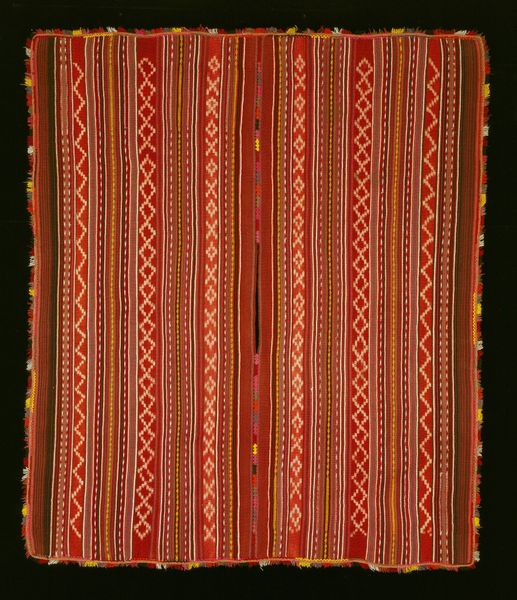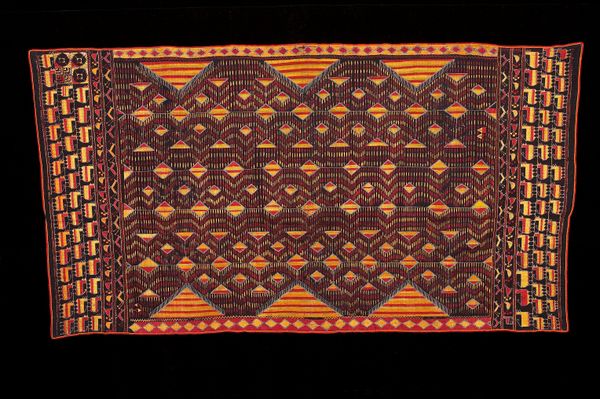
weaving, textile
#
natural stone pattern
#
folk-art
#
weaving
#
textile
#
text
#
geometric pattern
#
abstract pattern
#
repetitive shape and pattern
#
minimal pattern
#
repetition of pattern
#
vertical pattern
#
regular pattern
#
pattern repetition
#
layered pattern
Dimensions: 233 × 151.1 cm (91 3/4 × 59 3/8 in.)
Copyright: Public Domain
This blanket was woven by a Navajo artist, and its vibrant wool tells a story of skillful making. The process begins with sheep, raised and sheared for their fleece. This wool is then spun into yarn, a labor-intensive task done by hand using a spindle. The rich colors aren't accidental, either. They come from dyes extracted from plants and minerals, or in some cases, from commercially produced anilines. The weaving itself requires a loom, and a deep understanding of geometric patterns. The central diamond design, built up through careful work, embodies cultural and personal meanings. Weaving is not just a technical process, but a cultural practice. The blankets were originally made for insider use but later became a key commodity in trade with outsiders. Considering the full process – from raising sheep to the final woven product – helps us understand the significance of this blanket. It represents a blend of artistry, cultural identity, and economic exchange, challenging any strict separation between craft and fine art.
Comments
No comments
Be the first to comment and join the conversation on the ultimate creative platform.
